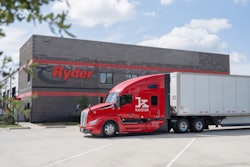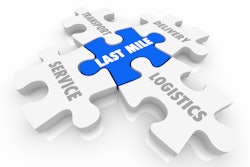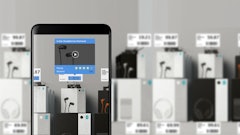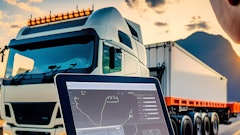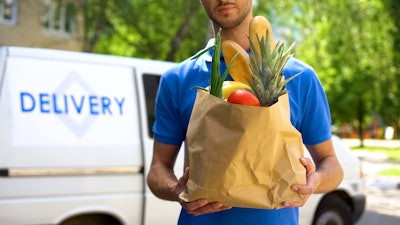
The delivery industry has seen a surge in success in the last few years, revolutionizing how we access everything from meals to merchandise. This growth is easily seen in the online food delivery sector, which is projected to expand to $165 billion by 2029. Leading the charge are companies that have demonstrated adaptability and innovation by effectively meeting the changing demands of consumers.
Their success is a testament to the potential in the delivery sector. Given this upward trajectory, there couldn't be a better time to venture into the delivery business and capitalize on these opportunities.
Key steps to start a delivery service business in 2024
Here's a detailed guide on how to start a delivery company this year:
1. Understand the delivery service market and your options
Start by understanding and assessing current market trends. This involves analyzing consumer preferences, technology advancements, profitable niches, and the local competitive landscape. Choosing the right niche within the delivery sector is vital. Here are some popular niches and what they entail:
● Food delivery. This niche focuses on speed and maintaining food quality. It requires a system for temperature control and quick delivery to ensure customer satisfaction.
● E-commerce logistics. This involves managing large inventories, providing efficient package tracking, and handling returns.
● Specialized courier service provider. This could include delivering sensitive documents or medical supplies, requiring a high level of security and timely delivery.
● Grocery delivery. Timely and accurate delivery of a wide range of products is key.
Also choose an effective delivery model. For example, a local food delivery service might use a fleet of scooters for quick urban deliveries and efficient delivery routes, while an e-commerce logistics company might need a mix of large trucks and smaller delivery vans.
Also, different niches can adopt various revenue models. Food delivery services might charge a fee per delivery or a subscription model, while e-commerce logistics might have dynamic pricing based on package size and delivery distance.
Different niches will have varying regulatory requirements as well. Pharmacy delivery services, for example, must comply with healthcare regulations, while alcohol delivery services need to adhere to age verification laws.
Will you own a fleet or partner with contractors?
Each option has its advantages and challenges, and the right choice depends on your own business model, budget, and operational needs.
Owning a fleet:
○ Pros:
■ Control. Owning a fleet gives you complete control over vehicles, including branding and customization.
■ Availability. You have vehicles available at all times, which can be crucial for urgent or high-volume delivery periods.
■ Long-term investment. While the initial cost is higher, owning a fleet can be more cost-effective in the long run.
○ Cons:
■ Upfront costs. Purchasing vehicles requires significant capital investment.
■ Maintenance and depreciation. Responsible for regular maintenance, repairs, and dealing with depreciation.
Partnering with contractors:
○ Pros:
■ Flexibility. Partnering with contractors offers flexibility, allowing you to scale up or down based on demand.
■ Reduced responsibility. You don’t have to worry about vehicle maintenance, insurance, or depreciation.
■ Lower initial investment. This option requires less capital upfront, making it ideal for startups or small businesses.
○ Cons:
■ Less control. You have less control over the vehicles and drivers, which can impact service quality.
■ Availability issues. You may face challenges in vehicle availability during peak times.
2. Begin business planning and competitive analysis
Developing a business plan and conducting a competitive analysis are fundamental steps in starting a delivery business. Start with an overview that encapsulates your business vision, mission, and the key aspects of your plan. This section should be compelling enough to grab the attention of potential investors or partners.
Define the scope of the delivery business. Are you focusing on local deliveries, e-commerce logistics, or a specialized niche like medical supplies? Clearly outline the nature of your services. Who are your potential customers? What are their needs and preferences? Analyze market trends, such as the growing demand for contactless deliveries or eco-friendly packaging solutions.
Make sure to detail the specific services you plan to offer. For example, if you're starting a food delivery service, describe how you'll handle different cuisines, maintain food quality, and manage timely deliveries. Additionally, outline how your business will operate daily. This includes your delivery methods, logistics, order management systems, and customer service protocols.
To conduct a competitive analysis, list your direct and indirect competitors. This includes local delivery services and larger players. Assess what these competitors do well and where they fall short. For instance, a competitor might have a robust delivery network but lack customer service.
Based on your analysis, identify gaps in the market that your small business can fill. Perhaps there's a demand for faster delivery times or more personalized service in your area.
3. Ensure legal and regulatory compliance
Licensing requirements can vary significantly depending on your location and the type of delivery services you offer. For example, if you're delivering food, you might need a food handler's permit and adhere to OSHA standards and other health and safety regulations. Some delivery services, like alcohol or pharmaceuticals, may require specialized permits due to their sensitive nature.
If your business will own vehicles, ensure they are properly registered and comply with local commercial vehicle regulations. Don't forget about business insurance and a business bank account.
4. Invest in technology
If you build your own delivery business, especially if you own a fleet, you'll need a robust system to help you optimize operations and ensure seamless management from the get-go.
For initial route planning, tools like Google Maps can be useful. Google Maps provides basic directions and estimated travel times. However, for a delivery business, it's advisable to invest in more comprehensive delivery management software from the beginning. Your platform should offer advanced features such as dynamic route optimization, real-time tracking, and automated dispatch.
5. Don't forget sustainability practices
Adopting eco-friendly operations and reducing your carbon footprint are crucial steps towards building a responsible and future-oriented business. Here’s how you can implement these practices:
● Consider investing in electric or hybrid vehicles.
● Use eco-friendly packaging materials for your deliveries.
● If your business involves warehousing, implement energy-efficient practices such as solar panels, LED lighting, and smart heating/cooling systems.
● Utilize advanced route optimization software to plan the most efficient routes. This not only saves time and fuel but also reduces emissions. Delivery management software can be key in providing artificial intelligence (AI)-powered route optimization.
6. Take a customer-centric approach
Implement systems that allow customers to track their deliveries in real-time. This transparency builds trust and enhances the overall experience by keeping customers informed. It is also a good business idea to offer various delivery options to cater to different customer needs. This could include same-day delivery, scheduled time slots, or even no-contact delivery options.
Additionally, ensure that all employees, from delivery personnel to customer service representatives, understand the importance of customer-centricity and are trained to uphold these values.
7. Stay on the lookout for emerging trends in the industry
Stay informed. Be open to adopting new technologies and new business models as the market evolves. Here are some key trends to watch:
● Autonomous vehicles. Self-driving vehicles are expected to revolutionize the delivery sector by enhancing efficiency and reducing labor costs.
● Contactless delivery. Popularized during the pandemic, this trend continues to grow, offering convenience and safety for customers.
● AI and machine learning. These technologies are increasingly being used for predictive analytics, route optimization, and personalized customer experiences.
8. Build partnerships
Partnering with e-commerce platforms can open up a vast market for delivery services. For example, collaborating with platforms can provide a steady stream of delivery orders.
Also establish partnerships with local businesses and restaurants to become their preferred delivery service provider. This can be effective in niches where these businesses may not have the resources to manage their own delivery service operations.
9. Scale and growth
As you expand your services or geographical reach, it's essential to maintain the quality of your service and invest in your team. Consistently evaluate your business performance using key metrics like delivery times, customer satisfaction, and operational costs. Tools like business intelligence software can provide valuable insights.
Ensure your technology infrastructure can support your growth. This might involve upgrading your delivery management software subscription, enhancing your IT systems, or adopting new technologies like AI for route optimization.
As you embark on this journey to start a delivery business, having the right technology partner is crucial. Tailored for delivery businesses and couriers, last-mile delivery management platforms offer a powerful blend of advanced route optimization, real-time tracking, and automated dispatch, designed to streamline your operations and supercharge your efficiency.






